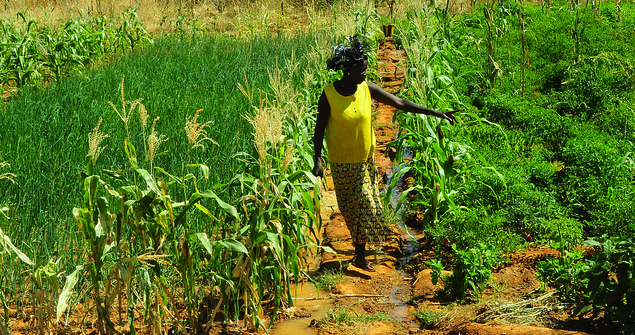Addressing Food Insecurity in Africa: The Need for Greater Strategic Alignment and a More Robust Finance Tracking System for Aid

Although a vast amount of money is poured into investments in agriculture and food production in Africa, approximately 65 per cent of the continent’s land is too damaged to produce food. Transparent and traceable funding that prioritises soil and land management is required to ensure investment is being directed to where it is most needed and supports long-term food security in the region.
Background
Food production needs to double in the next 35 years in order to meet forecast demand. Approximately 60 per cent of the world’s uncultivated arable land is located in Africa. The continent, however, is experiencing extensive amounts of land degradation due to harsh climates with high soil erosion, fragile soils and poor land management practices. Land productivity is declining at approximately one per cent annually, with an estimated 20 per cent loss of productivity over the last 40 years. With population growth and food demand continuing to rise exponentially, developing strategies to manage land degradation is critical to support long-term food security in the region.
Comment
Approximately US$68 billion is lost every year in Sub-Sahara Africa due to land degradation caused by poor land management, population pressure and climate change. Despite this loss, assessing the contribution and effectiveness of aid in addressing this issue remains a significant challenge.
There has been an increased international focus on the importance of sustainable land management, with the United Nations declaring 2015 the International Year of Soils. This priority however, is yet to reflect in donor strategies in Africa. A recent Montpellier Panel Report has highlighted the need for increased investment in land and soil management by African governments and donors, the stronger political support for sustainable land management and improved transparency for soil and land management programmes to address degradation.
Calculating the amount of aid allocated specifically to land management is proving challenging. In recent international climate change negotiations, OECD countries agreed to collectively contribute US$100 billion per year by 2020 in “climate finance” for developing countries. But, one of the only accessible tracking datasets available is the OECD’s Development Assistance Committee (DAC) Rio Marker. This marker is unable to calculate the amount of aid allocated to land management and a lack of accurate tracking continues to reduce effective monitoring and evaluation processes.
Donor governments in Europe currently fund soil management programmes through various institutions such as the International Centre for Tropical Agriculture (CIAT), the International Fertiliser Development Centre (IFDC) and the Alliance for a Green Revolution, making it difficult to identify contributions and collectively monitor the effectiveness of investments.
There are numerous climate finance funds and initiatives which currently exist, but the vast majority do not specify a particular area of focus for funding. This becomes problematic when attempting to align strategic efforts and assess the overall success of funding initiatives. More importantly, none of these initiatives, with the exception of the Congo Basin Forest Fund (CBFF), require projects to address land management issues. This means that, although funding is available for land management, there is no guarantee that approved projects will address this issue.
To ensure investments in soil and land management are effective, robust tracking systems of funding need to be established to better monitor, manage and evaluate the progress of projects. There also needs to be greater international co-operation to ensure strategic goals and development plans are aligned to increase success. The Montpellier Report suggests that this could be done by ensuring that projects in Africa are aligned with the Comprehensive Africa Agriculture Development Programme’s (CAADP) investment plans, making it a central institution with a greater ability to monitor donor finance and assess progress. A strategic alignment which prioritises land management would play a significant role in ensuring food security both locally and globally by safeguarding much-needed arable land for food production.
Haweya Ismail is a Research Analyst at Future Directions International’s Global Food and Water Crisis Research Programme. This article was originally published in Future Directions International on 25 February 2015. It is republished with permission.


